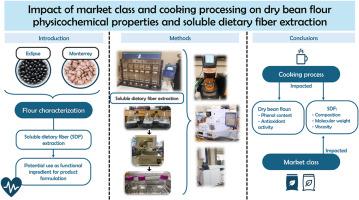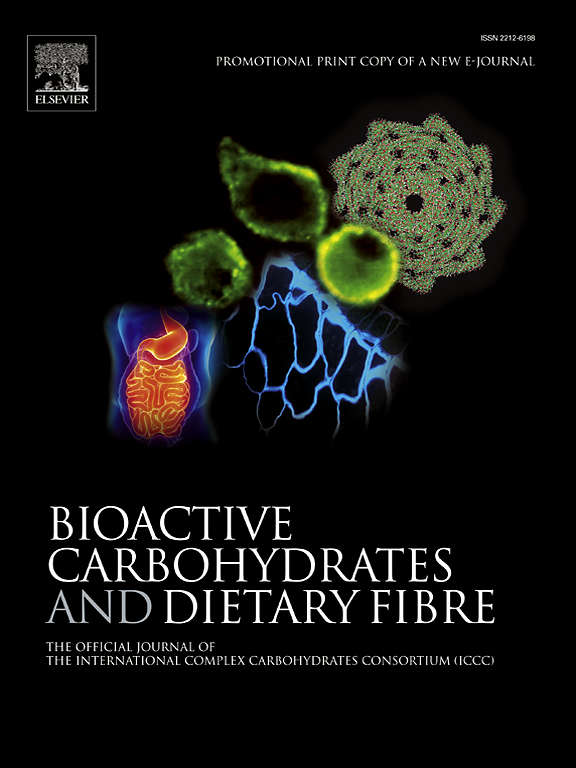Effects of cooking and market classes on nutritional and antioxidant properties of dry bean flours and soluble dietary fiber-rich fractions
IF 3.6
引用次数: 0
Abstract
Dry beans are a rich source of proteins, starch, dietary fiber, and phenolic compounds, thus exhibiting potential health benefits. Fractionating dry beans, especially soluble dietary fiber (SDF), could be considered a valuable functional food ingredient. This study investigated the effects of pinto and black dry bean market classes and atmospheric pressure cooking on the physicochemical attributes of dry bean flours and the extraction and characterization of SDF-rich fractions. Cooking significantly (p < 0.05) increased the dietary fiber content, altering the macronutrient profile. Raw flours exhibited higher levels of extractable phenols and antioxidant capacity, while cooked flours had more hydrolyzable phenols and associated antioxidant activities. Pinto beans were found to have higher levels of slowly digestible starch (23.76%) and resistant starch (5.24%) compared to black beans (20.63% and 3.22%, respectively). The SDF-rich fraction from cooked flours showed a reduced residual protein content and included pectic polysaccharides, hemicelluloses, and raffinose family oligosaccharides (RFOs), with cooking affecting their molecular weight distribution. These fractions demonstrated shear-thinning behavior and temperature-dependent viscosity. The study highlights the significant influence of market class and cooking process on the nutritional and antioxidant properties of dry beans, suggesting their potential contributions to dietary health.

烹饪和市场等级对干豆粉和富含可溶性膳食纤维部分的营养和抗氧化特性的影响
干豆是蛋白质、淀粉、膳食纤维和酚类化合物的丰富来源,因此具有潜在的健康益处。对干豆,尤其是可溶性膳食纤维(SDF)进行分馏,可被视为一种有价值的功能性食品配料。本研究调查了松豆和黑干豆市场等级和常压蒸煮对干豆粉理化属性的影响,以及富含 SDF 的馏分的提取和表征。蒸煮大大增加了膳食纤维的含量(p < 0.05),改变了常量营养素的结构。生面粉的可萃取酚和抗氧化能力水平较高,而熟面粉的可水解酚和相关抗氧化活性较高。研究发现,与黑豆(分别为 20.63% 和 3.22%)相比,平托豆的慢消化淀粉(23.76%)和抗性淀粉(5.24%)含量更高。从煮熟的面粉中提取的富含 SDF 的馏分显示残余蛋白质含量降低,其中包括果胶多糖、半纤维素和棉子糖家族低聚糖(RFO),煮熟会影响其分子量分布。这些馏分具有剪切稀化行为和随温度变化的粘度。这项研究强调了市场类别和烹饪过程对干豆营养和抗氧化特性的重要影响,表明它们对膳食健康的潜在贡献。
本文章由计算机程序翻译,如有差异,请以英文原文为准。
求助全文
约1分钟内获得全文
求助全文
来源期刊

Bioactive Carbohydrates and Dietary Fibre
Agricultural and Biological Sciences-Food Science
CiteScore
6.00
自引率
0.00%
发文量
38
期刊介绍:
 求助内容:
求助内容: 应助结果提醒方式:
应助结果提醒方式:


